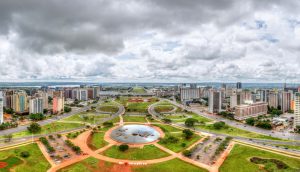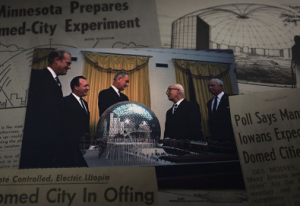A city planning expert has called on the government to follow the lead of some Asian countries and consider relocating Australia’s most population-slammed cities to ease urban congestion.
Associate Professor in Sustainability and Urban Planning at RMIT Wendy Steele on Friday told the PIA’s National Planning Congress in the Gold Coast that authorities need to radically rethink city planning, urging the government to consider options canvassed by international cities.
This includes giving serious consideration to relocating major cities or building brand new tech-powered metropolises.
“We can either retrofit existing cities or relocate some cities – which is already happening internationally,” she said.
“But these two basics aren’t being discussed in Australia.”
The call comes as the number of people in Australia grows exponentially, with Sydney’s population predicted to grow 60 per cent to 37.6 million by 2050 and Melbourne set to trump Sydney’s in the next few decades, according to ABS figures.
Most of this growth is concentrated in big cities, with two-thirds of the population living in these capital cities.
The relocation option has been floated for Indonesia’s overcrowded capital Jakarta since the 1950s and was resurrected by President Joko Widodo in April.
Other countries, like Malaysia with its Forest City development and South Korea’s “mini capital” government hub, have also embarked on similar projects to ease pressure on their cities.
But Australia trails in comparison to the international initiatives, Professor Steele says, and current planning is short-sighted, lacking in overarching strategic vision and overly project-oriented.
“Urban issues are at the forefront of most party’s agendas and yet there’s this strange paradox where despite these issues being at the forefront of the election they’re uncoupled from Australian cities – as though they’re floating in the nethosphere,” she said.
A vision of ‘technotopia’
Creating brand new tech-powered cities across Australia should also be considered as a solution to the nation’s rapid central population growth, Professor Steele argues.
Cities like Brasilia in Brazil started the trend in the 1950’s, building a new city underpinned entirely by new technologies and innovation.

The idea was also explored as far back as the 1960’s with the Minesotta Experimental City – a controversial plan to relocate 250,000 people into a tech-powered city built in a futuristic dome.

A similar plan was also floated in Australia in the 1980’s, when a vision of a high-tech city of the future with nuclear power and modern communication were explored by the government. The s0-called Multifunction Polis (MFP) also ultimately failed due to lack of public support.
The example has also more recently been taken up by Arizona with its smart city plan in Belmont powered by $80 million from millionaire Bill Gates and the Sino-Oman Industrial City – an ambitious plan to build an entirely new industrialist hub and city in Oman – are a few examples of cities built to manage growth with tech innovation at their heart.
“There is lots of opportunity here but little being taken off or being discussed in the Australian context,” professor Steele said
While ‘technotopia’ is not the only answer, technology has an important role to play in helping cities manage growing populations, she said.
The CLARA Plan
This kind of investment in technology to power cities is already being felt on Australia’s doorstep, she says, with the CLARA plan one example.
The plan, slated for the region between Sydney and Melbourne, is an ambitious plan to build up to eight of the world’s most advanced, sustainable, smart, greenfield cities and connect them with a high-speed rail.
Each of the cities would be just 35 minutes on rail from each city under the plan.
https://youtu.be/7FJ7sXTdQ2k
Comment below to have your say on this story.
If you have a news story or tip-off, get in touch at editorial@governmentnews.com.au.
Sign up to the Government News newsletter.




What these plans lack is a business plan that stacks up. What is the cost, per head of population housed, in the whole CLARA development? Where will the water come from? It’s currently costing well over $100,000 per additional resident just for public infrastructure, to squeeze them into our existing cities, and the price is escalating as we resort to tunnels and desalination plants. CLARA is no more than magical thinking. The real solution is to end our population growth. Then we can deliver those high-tech services and amenities to existing neighbourhoods over time, once we stop chasing our tail in infrastructure backlog.
Jane O’Sullivan I agree with you, stopping immigration and fix the current lack of infrastructure. Relocating cities to country areas is a bad idea given the size of our country.